Salem, Mass is a historic town with many historic sites. The city’s history spans centuries and visiting these historic sites is a great way to experience Salem’s history first hand.
The majority of these sites are listed on the National Register of Historic Places and their history is well documented so there’s plenty to learn about.
The following is a list of historic sites in Salem, Mass:
Bakers Island Lighthouse:
Address: Bakers Island, Salem, Mass
Built in 1821, Bakers Island Lighthouse is a historic lighthouse on Bakers Island in Salem Harbor.
The lighthouse is a 59-foot-tall granite and concrete lighthouse. It was built to replace an earlier lighthouse that had been constructed in 1798 but had been damaged in a storm in 1815.
On November 21, 1976, the Bakers Island lighthouse was added to the National Register of Historic Places.
Bessie Monroe House:
Address: 7 Ash Street, Salem, Mass
Built in 1811, the Bessie Monroe House, also known as the Thomas Perkins House, is a historic house constructed for local merchant Thomas Perkins.
The house is a Federal-style two-story brick house that is named after an elderly woman who occupied
the home when the Salem Redevelopment Authority took the property by eminent domain in 1970 and planned to demolish it.
Concerned about Monroe’s health, the Redevelopment Authority allowed her to stay in the property until her death in 1975, after which they had a change of heart and decided against demolishing it and sold it to a private owner.
On July 29, 1983, the house was added to the National Register of Historical Places
Bowker Place:
Address: 144-156 Essex Street, Salem, Mass
Built in 1830, Bowker Place is a historic commercial building constructed for businessman William Manning.
The building is a three-story Greek Revival-style brick building that features commercial space on the ground floor. In 1844, the building was acquired by local merchant Joel Bowker after Manning went bankrupt.
Some of the tenants who once occupied the commercial space on the ground floor include the Salem Police Court, Naumkeag Bank, Merchants Bank, Salem Marine Insurance Company and the Second Corp Cadets.
On July 29, 1983, the building was added to the National Register of Historic Places.
Bridge Street Neck Historic District:
Bridge Street Neck Historic District is a historic district that features primarily residential properties.
The district is located on land northeast of downtown Salem and is bounded by railroad tracks to its west, the shore of the peninsula to the east, modern developments to the north, and the Salem Common Historic District to the south.
The district contains about 1,200 buildings which are primarily residential buildings but also contain some commercial buildings along Bridge Street.
On July 19, 2002, the district was added to the National Register of Historic Places.
Broad Street Cemetery:
Address: 5 Broad Street, Salem, Mass
Established in 1655, Broad Street Cemetery is a historic cemetery located on Broad Street. It is the second oldest cemetery in Salem.
The cemetery is 2.69 acres in size and features 684 headstones and 85 tombs. Some of the notable people buried in this cemetery are Sheriff George Corwin, Judge Jonathan Corwin, Colonel Timothy Pickering, Congressman Benjamin Pickman Jr and Civil War general Frederick William Lander.
The cemetery is located within the McIntire Historic District and the Chestnut Street Historic District.
Charter Street Historic District:
The Charter Street Historic District is a small historic district that features that oldest part of Salem. The district features three historic properties on Charter Street: the Pickman House, the Grimshawe House and the Charter Street Cemetery.
On March 10, 1975, the Charter Street Historic District was added to the National Register of Historic Places.
Chestnut Street Historic District:
Chestnut Street Historic District is a 45-acre historic district that features a number of buildings designed by architect Samuel McIntire. The district is bounded by Bridge Street, Lynn Street, Beckford Street and River Street.
The district includes a number of historic houses, including:
Saunders House
Hamilton Hall
Ropes Mansion
Peirce-Nichols House
Stephen Phillips House
Pickering House
Witch House
Salem Anthenaeum
Francis Cox House
John Bertram Mansion
On August 28, 1973, the district was added to the National Register of Historic Places.
Charter Street Cemetery / Old Burying Point:
Address: 51 Charter Street, Salem, Mass
Established in 1637, the Old Burying Point Cemetery, also known as the Charter Street Cemetery, is the oldest cemetery in Salem.
The cemetery is 1.47 acres in size and contains 700 headstones and 17 box tombs that date back to the 17th, 18th and 19th centuries.
Some notable people buried in the cemetery include Salem Witch Trials Judge John Hathorne, Salem Witch Trials Judge Bartholomew Gedney, Mayflower passenger Captain Richard More, architect Samuel McIntire and Governor Simon Bradstreet.
The cemetery is a part of the Charter Street Historic District.
City Hall:
Address: 93 Washington St, Salem, Mass
Built in 1837-38, City Hall is a historic government building. The building is a two-story Greek Revival-style building designed by architect Richard Bond and constructed out of granite. The building was built to replace the Old Town Hall at Derby Square.
On April 3, 1979, the building was added to the National Register of Historic Places.
Crombie Street District:
The Crombie Street District is a small historic district that features seven houses and one church. The district is bounded by Crombie Street and Barton Street.
Crombie Street was laid out in 1805 by local tavern owner Benjamin Crombie. The houses in the district were built in the 18th and 19th century and feature Italianate, Federal and Georgian-style architecture.
On September 16, 1983, the district was added to the National Register of Historic Places.
Derby Waterfront District:
The Derby Waterfront District is a historic district in the waterfront area of Salem.
The district includes a number of historic properties, such as the Salem Maritime National Historic Site, the Custom House, the House of Seven Gables, the Nathaniel Hawthorne Birthplace and the Derby wharf.
Most of the properties in this district date to the 18th and 19th centuries but at least three date to the 17th century.
On May 17, 1976, the Derby Waterfront was added to the National Register of Historic Places.
Derby Street Historic District:
The Derby Street Historic District is a historic district established by the city that features historical properties on Derby Street. The district runs from Herbert Street to Blockhouse square.
Some of the historic properties in this district include the House of Seven Gables, the Custom House, the Derby House and the Salem Maritime National Historic Site.
The Derby Street Historic District was established by the city of Salem in 1976.
Derby Wharf Lighthouse Station:
Address: Derby Wharf, Salem, Mass
Built in 1871, the Derby Wharf Lighthouse Station is a small lighthouse on Derby Wharf. The lighthouse is a white, square, brick lighthouse measuring 14 feet tall and is one of only five square lighthouses in the state.
The lighthouse was constructed for $3,000 in 1871. In 1966, it became a part of the Salem Maritime Historic Site and in 1976 it became a part of the Derby Waterfront local historic district.
In the 1970s, the lighthouse was automated and in 1983 it became powered by solar power.
On June 15, 1987, the Derby Wharf Lighthouse Station was added to the National Register of Historical Places.
Downtown Salem District:
The Downtown Salem District is a historic district that features of cluster of historic properties in downtown Salem. The district is bounded by Church Street, Central Street, New Derby Street and Washington Street.
Some of the historic properties in this district include Old Town Hall, the Joshua Ward House and City Hall.
On December 4, 1972, the district was added to the National Register of Historic Places.
Essex Institute Historic District:
The Essex Institute Historic District is a two-acre historic district that features a number of historic properties owned by the Essex Institute. The district is bounded by Brown Street, Washington Square West and Essex Street.
Some of the historic properties in this district include:
Crowninshield-Bentley House
Gardner-Pingree House
John Tucker Daland House
Philips Library
John Ward House
Andrew Safford House
Lyle-Tapley Shoe Shop
Vaughan Doll House
On June 22, 1972, the district was added to the National Register of Historic Places.
East India Marine Hall:
Address: 161 Essex Street, Salem, Mass
Built in 1824-25, the East India Marine Hall is a museum built by the East India Marine Society to display its collection of maritime artifacts.
The East India Marine Hall was designed by architect Thomas Waldron Sumner and is a two-story, Greek Revival-style building that features a pitched roof, a granite facade, arched windows on the second floor and rectangular windows on the first floor.
In 1965, East India Marine Hall was designated a National Historic Landmark and was added to the National Register of Historic Places in 1966.
Federal Street District:
The Federal Street District is a historic district that features a mix of residential and civic properties. Most of the residential properties on this district were built between 1810 and 1900 but a few were built in the 18th century.
Some of the historic properties in the district include the Old Granite Courthouse, the Superior Court, Tabernacle Church and the Registry of Deeds.
On May 17, 1976, the district was added to the National Register of Historic Places.
First Universalist Church:
Address: 211 Bridge Street, Salem, Mass
Built in 1808, the First Universalist Church is a historic church built for the First Universalist Society of Salem.
The building is a Federal-style building designed by architect William Putnam. It is a Wren-Gibbs type brick church building with a square tower.
On July 29, 1983 the church was added to the National Register of Historic Places.
Fort Lee:
Address: Fort Ave, Salem, Mass
Built in 1776, Fort Lee is a historic Revolutionary War-era fort built to protect Salem Harbor from British invasion.
The fort is an irregular four pointed star earthwork fort with a gate located at the west rampart. It is one of the few Revolutionary War period earthwork forts in Massachusetts that has survived relatively intact.
On April 14, 1994, the fort was added to the National Register of Historic Places.
Fort Pickering:
Address: 50 Winter Island Rd, Salem, Mass
First built in 1643, Fort Pickering is a historic fort on Winter Island.
The fort is a horseshoe shaped fort. The walls of the fort are constructed out of granite exteriors with earthen mounds behind them and they measure about four and 15 feet in height.
The fort has been rebuilt and renamed numerous times throughout the 17th and 18th centuries until it was finally named Fort Pickering in honor of Salem native Colonel Timothy Pickering in 1799.
In 1871, a lighthouse was built at the site and was named Winter Island Light but it is sometimes referred to as the Fort Pickering Lighthouse.
On February 8, 1973, Fort Pickering was added to the National Register of Historic Places.
Gedney and Cox Houses:
Address: 21 High Street, Salem, Mass
Built in 1665 and 1775, the Gedney and Cox Houses are two historic 17th century houses that are now a pair of historic house museums run by Historic New England.
The Gedney House was built in 1665 for shipwright Eleazor Gedney and is a First Period house. The Gedney family later sold the property and it changed hands many times until it was purchased by Benjamin Cox sometime before the Revolutionary War.
Cox then built what is now called the Cox House on the property in 1775, which is a small, one-and-a-half story house.
In 1967, SPNEA (Society for the Preservation of New England Antiquities), which is now called Historic New England, purchased the houses and opened them as historic house museums.
On October 1, 1974, the houses were added to the National Register of Historic Places.
Greenlawn Cemetery:
Address: 57 Orne Street, Salem, Mass
Established in 1807, Greenlawn Cemetery is a historic cemetery on Orne Street.
The cemetery is about 100 acres in size and has roughly 22,000 burials and is still in active use. The cemetery also features a chapel, a Civil War memorial and a monument.
Some notable people buried in the cemetery are John Phillip Riley, a Navy seaman who received the Congressional Medal of Honor for his service in the Spanish-American War, and Reverend Jacob Stroyer, an African-American minister, author and social reformer.
Hamilton Hall:
Address: 9 Chestnut St, Salem, Mass
Hamilton Hall is a historic public building that was named after Founding Father Alexander Hamilton
The building is a three-story Federal-style brick building designed by architect Samuel McIntire and was constructed to serve as a social hall. The ground floor consisted of two retail spaces while the upstairs featured a ballroom with a dance floor and a curved balcony.
On December 30, 1970, Hamilton Hall was added to the National Register of Historic Places.
Howard Street Cemetery:
Address: 29 Howard Street, Salem, Mass
Established in 1801, the Howard Street Cemetery is a historic cemetery and the site of Giles Corey’s death in 1692.
The cemetery is 2.5 acres in size and features 1,100 headstones. Before it was a cemetery, it was an open field where it is believed that Salem Witch Trials victim Giles Corey was pressed to death by Sheriff George Corwin in September of 1692.
Some notable people buried in the cemetery include numerous Revolutionary War soldiers as well as local merchant Capt. George Crowninshield, Jr and local artist George Ropes Jr.
Hawthorne Hotel:
Address: 18 Washington Square, Salem, Mass
Built in 1925, the Hawthorne Hotel is historic hotel named after local author Nathaniel Hawthorne.
The building is a six-story Colonial Revival-style brick hotel that was designed by architect Philip Horton Smith and features Palladian windows, corner quoins and recessed arched windows.
The hotel is a part of the Salem Common Historic District.
House of Seven Gables:
Address: 115 Derby Street, Salem, Mass
Built in 1668, the House of Seven Gables, also known as the Turner House, is a historic house museum built by Salem merchant Captain John Turner that was made famous by Nathaniel Hawthorne’s 1851 novel The House of Seven Gables.
The house is a two-story clapboard First Period house that features seven gables and a slate roof as well as a hidden staircase that leads to the second floor.
In 1908, the house was purchased by Caroline O. Emmerton, founder of the House of Seven Gables Settlement Association, and in 1910 the house opened to the public as a historic house museum.
On March 29, 2007, the House of Seven Gables Historic District was designated a National Historic Landmark.
John Ward House:
Address: 9 Brown Street, Salem, Mass
Built in 1684, the John Ward House is a historic house that was built for local currier John Ward.
The house is a two-and-a-half-story First Period wood-frame house with a large central chimney and a side-gable roof. The house was originally located on St. Peter Street and later moved to its current location on Brown Street in 1910.
On November 24, 1968, the house was added to the National Register of Historic Places and was designated a National Historical Landmark.
Joseph Fenno House:
Address: 12-14 Hawthorne Boulevard, Salem, Mass
Built in 1811, the Joseph Fenno House is a historic house built for Joseph Fenno that now serves as the headquarters of the Woman’s Friend Society.
The house is a three-story brick Federal-style double-house that features a hip roof and four chimneys.
The house was later occupied by Captain John Bertram, who died in 1876 and his family bequeathed the house to the Woman’s Friend Society, which is a social center, residence and employer for working women.
On September 17, 2008, the house was added to the National Register of Historic Places.
Joseph Story House:
Address: 26 Winter Street, Salem, Mass
Built in 1811, the Joseph Story House is a historic house that was once home to U.S. Supreme Court Associate Justice Joseph Story. Notable guests who stayed at the house include James Madison in 1817 and the Marquis de Lafayette.
The house is a three-story brick Federal-style building with a hip roof and two chimneys.
On November 7, 1973, the house was added to the National Register of Historic Places and was designated a National Historic Landmark.
Joshua Ward House:
Address: 148 Washington St, Salem, Mass
Built between 1784 and 1787, the Joshua Ward House is a historic house that was built for local merchant Joshua Ward and now serves as the Merchant Hotel.
The house is built on the former site of Sheriff George Corwin’s house, who was the high sheriff during the Salem Witch Trials.
In 1784, Ward bought the property, tore down Corwin’s house and built this three-story brick Federal-style mansion in its place, which was designed by local architect Samuel McIntire.
On February 8, 1978, the building was added to the National Register of Historic Places.
In 2014, the building was sold to a private owner who opened it to the public as a boutique hotel, called the Merchant Hotel, the following year.
John P. Peabody House:
Address: 15 Summer Street, Salem, Mass
Built in 1874, the John P. Peabody house is a historic house built for local merchant John P. Peabody.
The house is a two-story wood-frame Colonial Revival-style house with a slate gambrel roof.
On July 29, 1983, the house was added to the National Register of Historic Places.
Gardner-Pingree House:
Address: 128 Essex Street, Salem, Mass
Built in 1804, the Gardner-Pingree House is a historic mansion that now serves as a historic house museum run by the Peabody Essex Museum.
The house is a three-story Federal-style brick house that was designed by architect Samuel McIntire and was built for John Gardner. It was later sold to Captain Joseph White in 1814 and then sold to David Pingree in 1834.
The house was the site of Captain White’s gruesome murder in 1830. Three men were accused of the murder and two were tried and executed at the old Salem jail and the other hanged himself in his cell before his case went to trial.
On December 30, 1970, the house was added to the National Register of Historic Places.
Nathaniel Bowditch House:
Address: 9 North Street, Salem, Mass
Built sometime around 1759-60, the Nathaniel Bowditch House is a historic house that was built for Samuel Curwen and was later owned by Nathaniel Bowditch.
The house is a three-and-a-half-story clapboard Federal-style house that was originally located on Essex Street but was moved in the 1940s to avoid demolition.
On October 15, 1966, the house was added to the National Register of Historic Places.
North Street Fire Station:
Address: 142 North Street, Salem, Mass
Built in 1881, the North Street Fire Station is a historic firehouse and one of the oldest active fire stations in the U.S.
The fire station is a two-story Queen Anne-style brick firehouse that was designed by architect William D. Dennis. The building features a single bay designed to house a steamer and additional space in the back to house horses. The upper level included a ward room used for meetings and social or civic events.
The station was the second fire station built in Salem. The first was built in 1880 in Ward 5 but was destroyed during the Great Salem Fire of 1914.
On March 6, 2013, the fire station was added to the National Register of Historic Places.
Old Town Hall:
Address: 32 Derby Square, Salem, Mass
Built in 1816, the Old Town Hall is a historic municipal building that once served as the city’s town hall.
The building is a two-story brick Federal-style building, constructed by master mason Joshua Upham, that features Palladian windows and wooden floors.
The first floor originally housed a marketplace while the second floor was used to host public meetings and gatherings.
In 1837, the city build a new town hall on Washington Street and Old Town Hall was no longer used as the headquarters of the city government.
In 1972, the Old Town Hall and neighboring streets were added to the National Register of Historic Places as the Old Town Hall Historic District.
In 2011, the city opened the Salem Museum, a history museum featuring exhibits on Salem history, on the first floor of the Old Town Hall.
Old Salem Jail:
Address: 50 St Peter St, Salem, Mass
Built between 1811 – 1813, the Old Salem Jail is a historic jail located next to the Howard Street Cemetery.
The jail is constructed out of Rockport granite blocks and was designed to hold 112 inmates. It is not know who designed the jail but it was constructed by David Robbins with Joseph Edwards supervising.
The jail was remodeled and expanded in 1884, under the direction of architect Rufus Sargent, when the west wing was constructed, which increased the jail’s capacity to 150 inmates.
Despite being remodeled, the jail was never modernized and never had electricity or individual plumbing in the cells.
The jail officially closed down in 1991 after the inmates sued the county for inadequate living conditions due to the lack of plumbing and other modern amenities.
Point Neighborhood Historic District:
The Point Neighborhood Historic District is an early 20th century residential historic district near downtown Salem. The district is bounded by Lafayette Street, South River, Congress Street, and Chase and Leavitt Streets.
Almost the entire neighborhood was destroyed during the Great Salem Fire of 1914 and had to be rebuilt, which is why the buildings date to the early 20th century.
On December 2, 2014, the district was added to the National Register of Historic Places.
Proctor’s Ledge Memorial:
Address: 7 Pope Street, Salem, Mass
Proctor’s Ledge Memorial is a memorial dedicated to the 19 people hanged at Proctor’s Ledge during the Salem Witch Trials in 1692.
The memorial is located at the base of Proctor’s Ledge which is a rocky outcrop on the edge of town.
The memorial consists of a semi-circular wall of granite blocks where the name of the victims have been engraved.
The ledge was confirmed as the site of the Salem Witch Trials executions in 2016 and the memorial was erected there the following year.
Pickering House:
Address: 18 Broad Street, Salem, Mass
Built sometime around 1660, the Pickering House is a historic First Period house built by local farmer John Pickering Jr. It is the oldest house in Salem to be continuously occupied by one family.
The house is a two-and-a-half-story rectangular house with a side gable roof with a pair of front gables at the facade.
In 1745, Colonel Timothy Pickering was born in the house and later grew up to become an adjutant general in the Revolutionary War and the Secretary of State for the United States government.
The Pickering House is a part of the McIntire Historic District.
Pickman House:
Address: 43 Charter Street, Salem, Mass
Built in 1672, the Pickman House, also known as the Goult – Pickman House, is a historic First Period house.
In 1969, the house was restored by Historic Salem. In 1983, it was purchased by the Peabody Essex Museum and now serves as a visitor center for the city.
The Pickman House is a part of the Charter Street Historic District.
Peirce-Nichols House
Address: 80 Federal Street, Salem, Mass
Built in 1782, the Peirce-Nichols house is a historic house that was built for merchant Jerathmiel Peirce.
The house is a Georgian-style three-story clapboard house designed by architect Samuel McIntire and is the first house McIntire is known to have designed.
The Essex Institute bought the house in 1917 and opened it to the public as a historic house museum.
On November 24, 1968, the house was added to the National Register of Historic Places and was designated a National Historic Landmark.
Ropes Mansion:
Address: 318 Essex Street, Salem, Mass
Built around 1727, the Ropes Mansion is a historic mansion built for local merchant Samuel Barnard.
The house is a two and ½ story Georgian-style mansion with a wood clapboard exterior and a slate-shingled gamble roof.
The house was later purchased by Judge Nathaniel Ropes Jr in 1768 and it remained in the Ropes family until 1907 when it was left to the Trustees of the Ropes Memorial who opened it to the public as a historic house museum in 1912. In 1989, the house was donated to the Peabody Essex Museum.
Rufus Coate House:
Address: 14 Lynde Street, Salem, Mass
Built in 1787, the Rufus Coate House is a historic house built for Deacon Ebenezer Beckford and was later purchased by politician Rufus Coate in 1825.
The house is a three-story Federal-style house with a wood clapboard exterior and a hip roof.
On November 12, 1982, the house was added to the National Register of Historic Places.
St Peter’s Church:
Address: 24 St. Peter Street, Salem, Mass
Built in 1833, St. Peter’s Episcopal Church is a historic church built on land donated by accused witch Philip English in 1733.
In 1733, a small wooden church was built on this spot and a small cemetery was established around it. In 1833, the wooden church was torn down and the current church was built in its place.
The current church is a large granite building designed by Isaiah Rogers. It was enlarged in 1845/6 and a chapel was added to the rear of the church in 1871.
Since the current church is much larger than the original church, it was built on top of some of the existing graves in the churchyard, including Philip English’s grave.
Salem Common Historic District:
The Salem Common Historic District is a historic district that features, Salem Common, a historic park that was established in 1667.
The district is bounded by Bridge Street, Derby Street, and St. Peter’s Street and Collins Cove.
Some of the historic buildings located in the district include the Joseph Story House, Andrew-Stafford House, John Bertram House and the Old Salem Jail.
On May 12, 1976, Salem Common Historic District was added to the National Register of Historic Places.
Salem Lyceum:
Address: 43 Church Street, Salem, Mass
Built in 1830, the Salem Lyceum is a historic public lecture hall built for the Salem Lyceum Society.
The building is built on the former site of accused witch Bridget Bishop’s apple orchard and house.
The Lyceum is a two-story brick building with a gable roof. The building once featured a semi-circular amphitheater lecture hall that could seat 600 people and a large library with an extensive collection.
On February 12, 1877, Alexander Graham Bell demonstrated his telephone invention to the public for the first time when he placed a call from Lyceum Hall to his assistant in Boston.
After the Salem Lyceum Society dissolved in 1898, the building was used as offices for various companies. In 1969, it was purchased by the Salem Redevelopment Authority who then sold it to a private owner in 1972.
In most recent years, the building has housed various restaurants and is currently occupied by Turner’s Seafood restaurant.
Salem Diner:
Address: 70 1/2 Loring Ave
Built in 1941, the Salem Diner is a diner housed in a historic sterling streamliner and is one of only two Sterling Streamline diners left in the state.
The building has a wood frame and porcelain enamel exterior with a rounded metal roof with curved ends and the eastern end of the building features a characteristic shovel nose.
The doors have porthole windows and the roof is decorated with a “fin” that runs the length of the roof and serves as a backdrop for the diner’s neon sign.
On September 22, 1999, the Salem Diner was added to the National Register of Historic Places.
Salem State bought the diner in 2013 to use the land it sits on and hired a vendor to run the diner but later closed it in 2019.
Salem Maritime National Historic Site:
The Salem Maritime National Historic Site is a historic site that features the historic waterfront area at Salem Harbor.
The site is nine acres in size and consists of 12 historic structures and a replica tall ship, which includes:
Derby House
Derby Wharf
Friendship of Salem ship
Hawkes House
Narbonne House
Pedrick Store House
Salem Custom House
St. Joseph Hall
West India Goods Store
On March 17, 1938, the site was declared a National Historic Site, making it the first National Historic Site in the United States.
On September 1, 1976, the site was added to the National Register of Historic Places.
Salem Willows Historic District:
The Salem Willows Historic District is a historic district that features Salem Willows Park. The district is 100 acres in size and is located on Salem Neck.
The Salem Willows Area has two significant features: the Juniper Point neighborhood and the Salem Willows amusement park. The Juniper Point neighborhood consists of historic 19th century houses while the Salem Willows Park is a city park established in 1858.
On March 25, 1994, the district was added to the National Register of Historic Places.
Shepard Block:
Address: 298–304 Essex Street, Salem, Mass
Built in 1851, the Shepard Block is a group of historic row houses on Essex Street built for Michael Shepard.
The building is a three-story brick Greek Revival-style building that consists of four row houses. The building was originally built for residential use but the ground floor was modified for commercial use in 1890.
On July 29, 1983, the building was added to the National Register of Historic Places.
St. Nicholas Orthodox Church and Rectory:
Address: 64-66 Forrester Street, Salem, Mass
Built in 1908, the St. Nicholas Orthodox Church and Rectory is a historic church on Forrester Street.
The church is an Exotic Revival-style building designed by William Devereaux Dennis. The wooden church features a large central tower with an octagonal belfry and two corner towers. A two-story Colonial Revival-style rectory sits next to the church.
On February 18, 1994, the church was added to the National Register of Historic Places.
Thomas March Woodbridge House:
Address: 48 Bridge Street, Salem, Mass
Built in 1809, the Thomas March Woodbridge House is a historic house built for tannery owner Thomas March Woodbridge.
The building is a three story Federal-style building that is believed to have been designed by Samuel McIntire.
On March 31, 1975, the Thomas March Woodbridge House was added to the National Register of Historic Places.
Wesley Methodist Church:
Address: 8 North St, Salem, Mass
Built in 1888, the Wesley Methodist Church is a historic church on North Street.
The church is a Gothic Revival-style building designed by architect Lawrence B. Volk of New York. The building is a red brick building with brownstone trim and a gray slate roof and a square corner tower.
The church was one of the only Gothic Revival-style buildings in the city to survive the Great Salem Fire of 1914.
On July 29, 1983, the building was added to the National Register of Historic Places.
West Cogswell House:
Address: 5-9 Summer Street, Salem, Mass
Built in 1834, the West Cogswell House is a historic row house built for Captain Nathaniel West.
The house is a group of three, three-story Greek Revival-style brick row houses.
Sometime around 1870, the house was purchased by Civil War General and U.S. Congressman William Cogswell. Cogswell lived there until his death in 1895.
On July 29, 1983, the building was added to the National Register of Historic Places.
Witch House / Corwin House:
Address: 310 Essex Street, Salem, Mass
Built around 1675, the Witch House, also known as the Jonathan Corwin House, is a historic house where Salem Witch Trials judge Jonathan Corwin lived in 1692.
The building is a two-and-a-half-story wood frame First Period house with a center chimney and a gable roof. The windows are diamond-paned casements.
The house was originally built for Nathaniel Davenport but he never finished it and sold the unfinished house to Corwin in 1675.
The house remained in the Corwin family until the 1850s, when the Corwin’s sold it to a pharmacist, named George Farrington, who added a pharmacy to the side of the building.
Around the turn of the century, the house was divided into two commercial spaces and the second commercial space housed an antique store. Both of these businesses operated in the house until at least 1940.
In 1944, the house was moved back 35 feet from North Street to its present location on Essex Street. Around this time it was also restored to its 17th century appearance and opened as a historic house museum in 1946.
William Murray House:
Address: 39 Essex Street, Salem, Mass
Built in 1688, the William Murray House is historic house built for William Murray who was a court clerk in the Salem Witch Trials and provided testimony against accused witch Alice Parker.
The house is a 2 and ½ story First Period clapboard house that has been enlarged and modified numerous times in the 18th century and was restored in 1980.
On March 9, 1990, the house was added to the National Register of Historic Places.
Winter Island Historic District and Archeological District:
The Winter Island Historic District is a historic district that features Winter Island, a small island that served as the center of Salem’s fishing industry in the 17th and 18th century.
This 45-acre island also features a former Coast Guard Station, Winter Island Marine Park, Fort Pickering and a small hill known as Execution Hill, which was used as an execution site during the 18th and 19th centuries.
On April 14, 1994, the Winter Island Historic and Archaeological District was created and added to the National Register of Historic Places.
YMCA:
Address: 284-296 Essex St, Salem, Mass
Built in 1898, the Salem YMCA building is a historic YMCA building on Essex Street.
The building is a three-story Classical Revival-style brick building designed by architect Walter Jefferson Paine.
On July 29, 1983, the building was added to the National Register of Historic Places.
Sources:
Tolles, Bryant F. and Carolyn K. Tolles. Architecture in Salem: An Illustrated Guide. University Press of New England, 2004.
MACRIS, Massachusetts Cultural Resource Information System, Massachusetts Historical Commission, mhc-macris.net

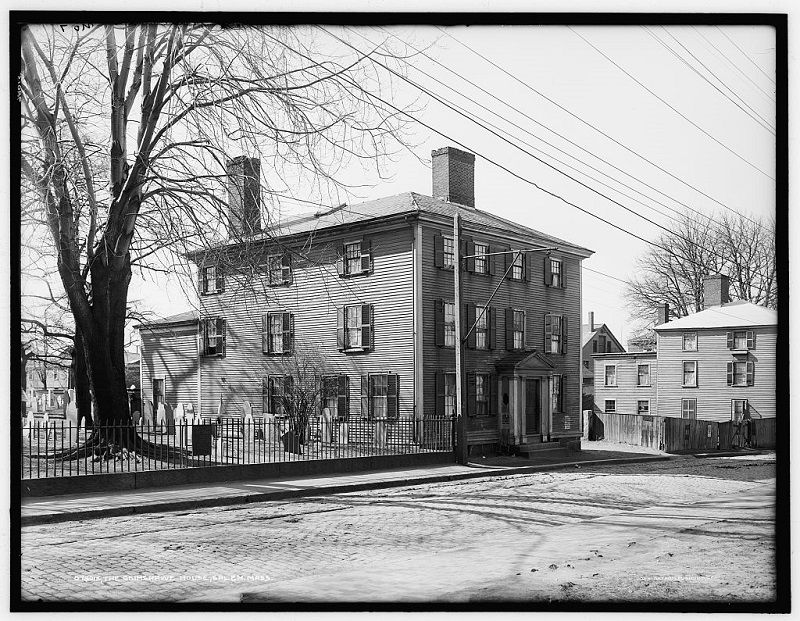
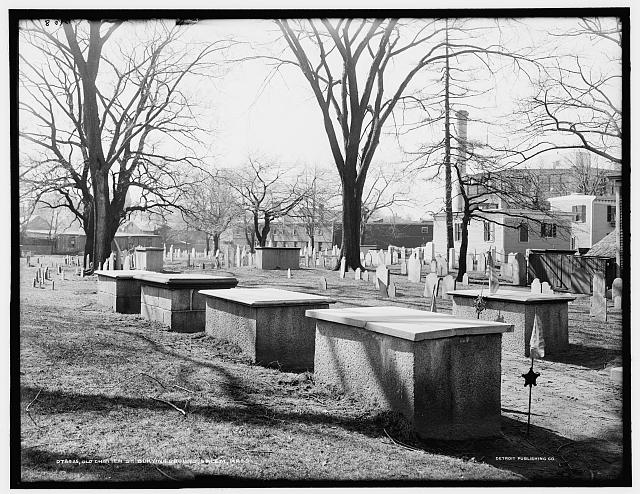
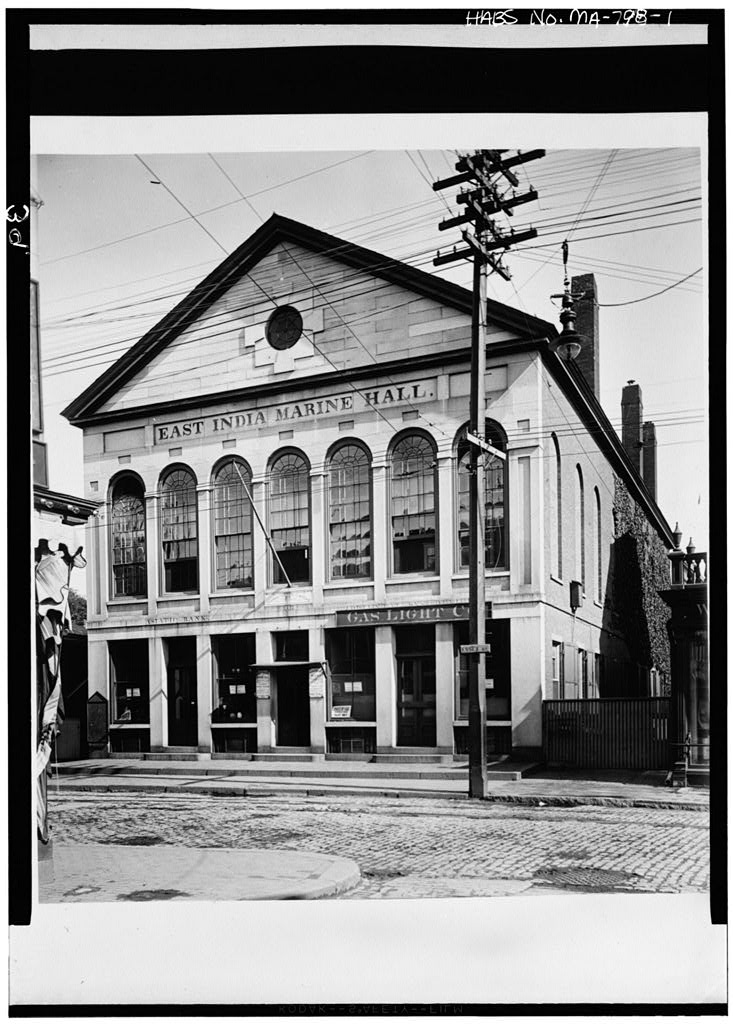
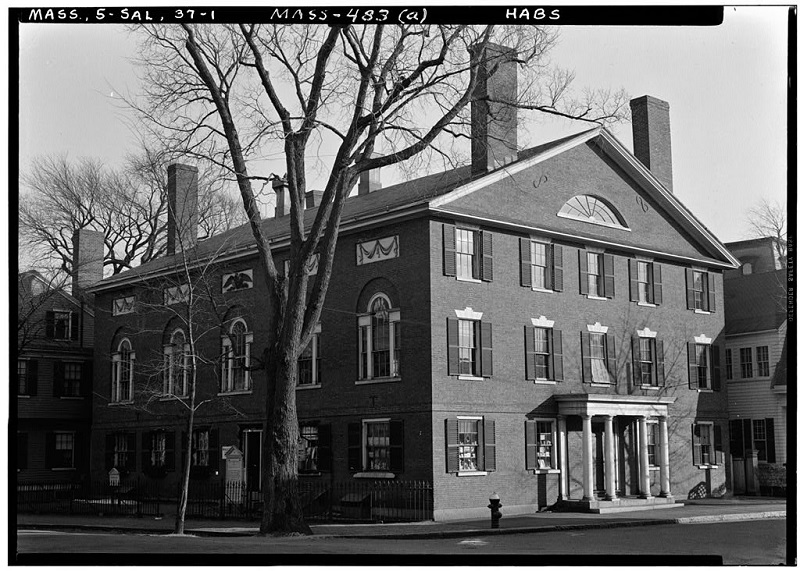
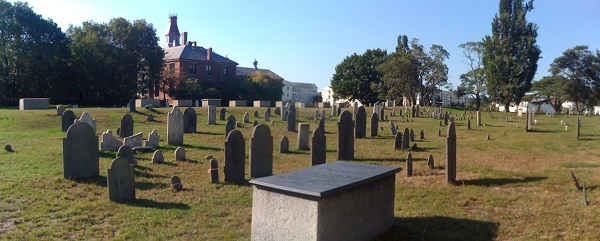
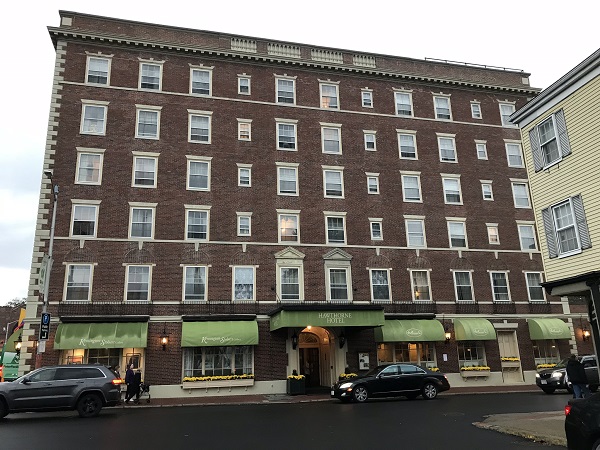
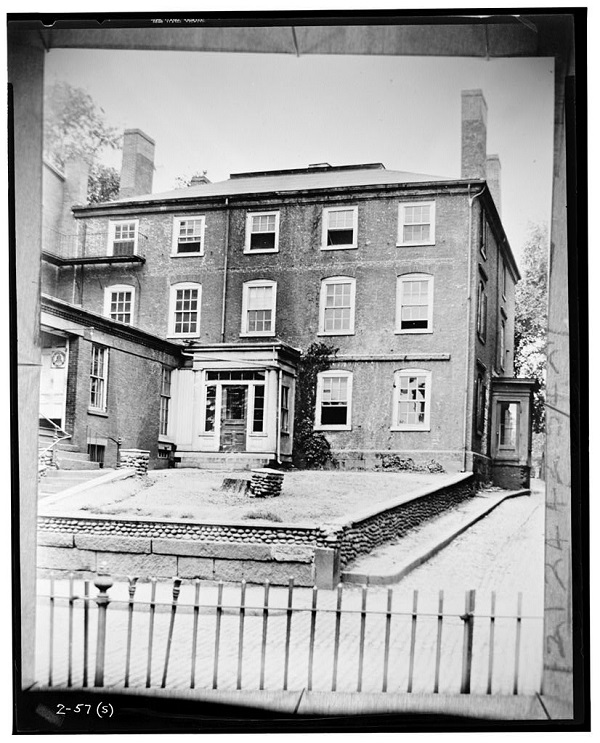
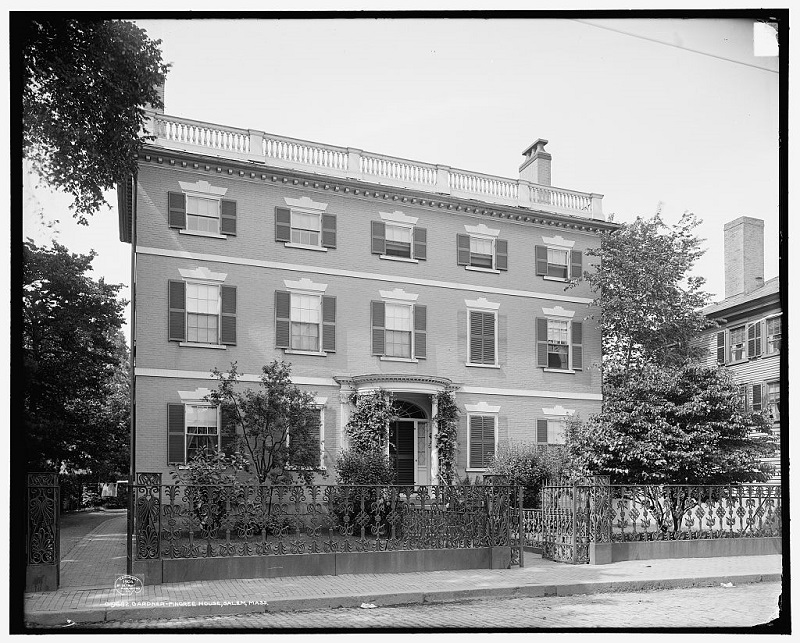
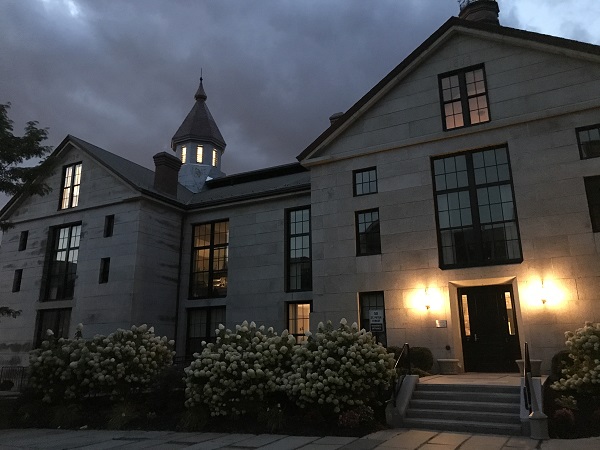
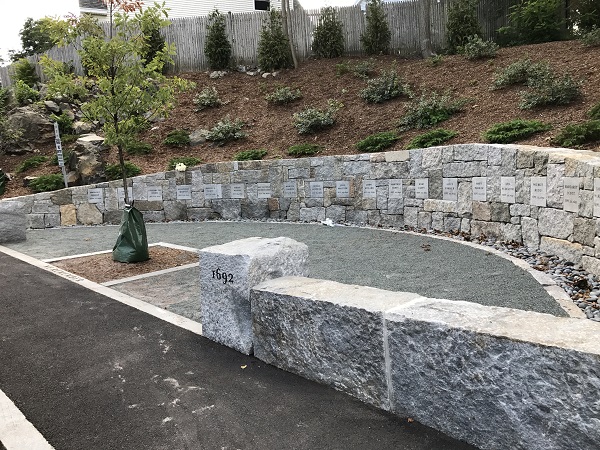

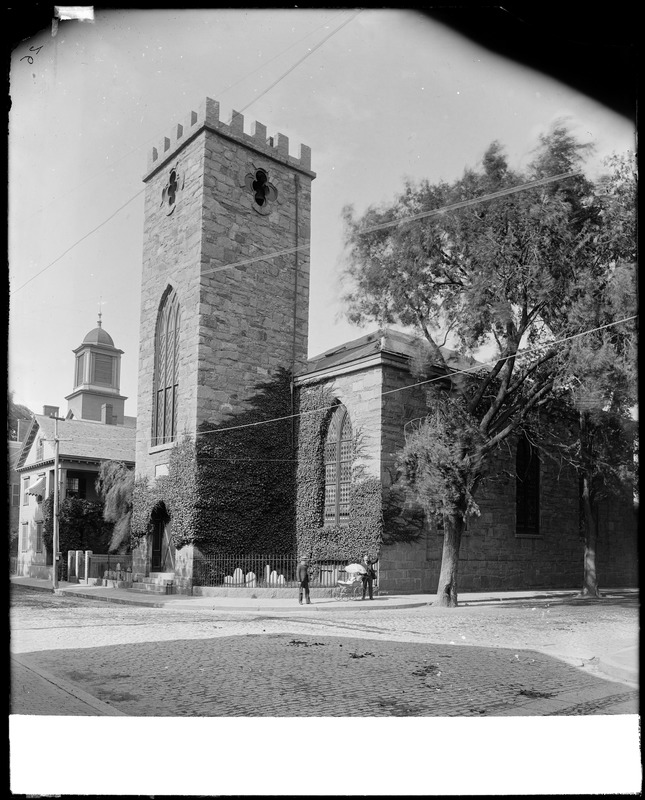
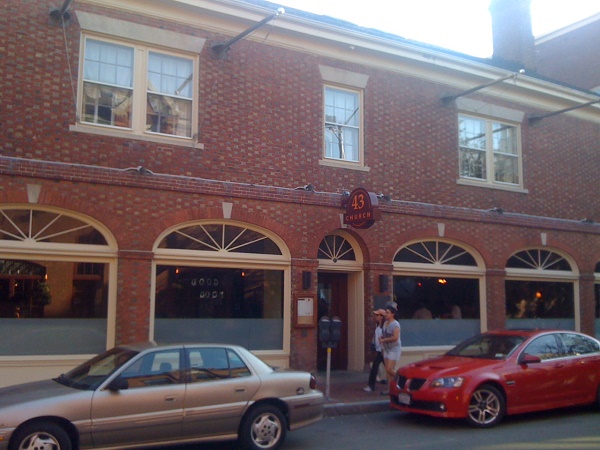

There is a historical site called “The Valley” on Loring Avenue, but there doesn’t seem to be anything posted about it?